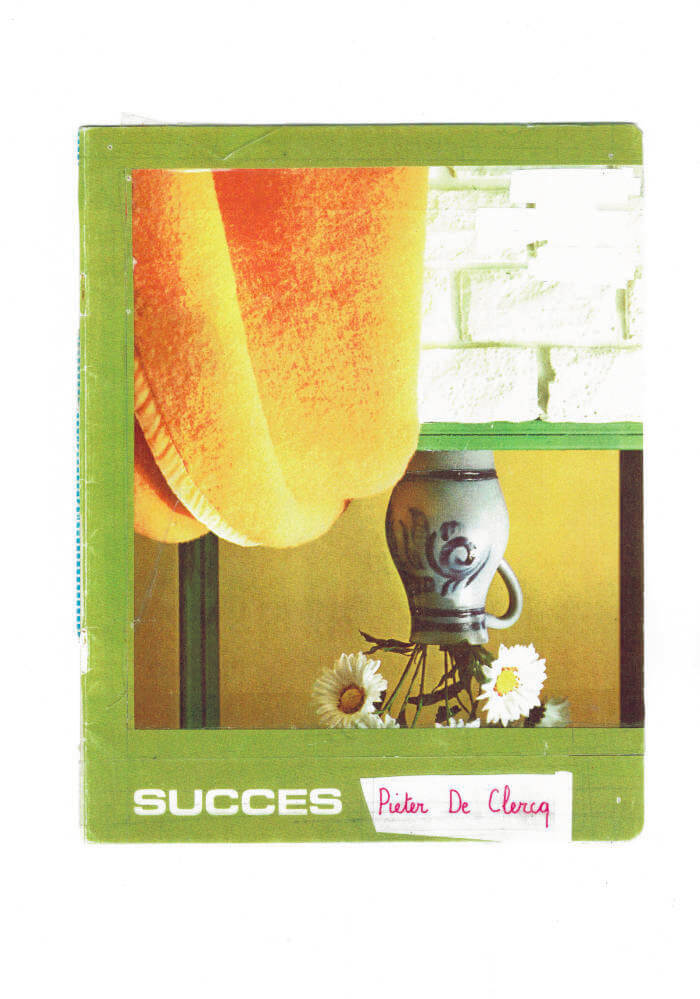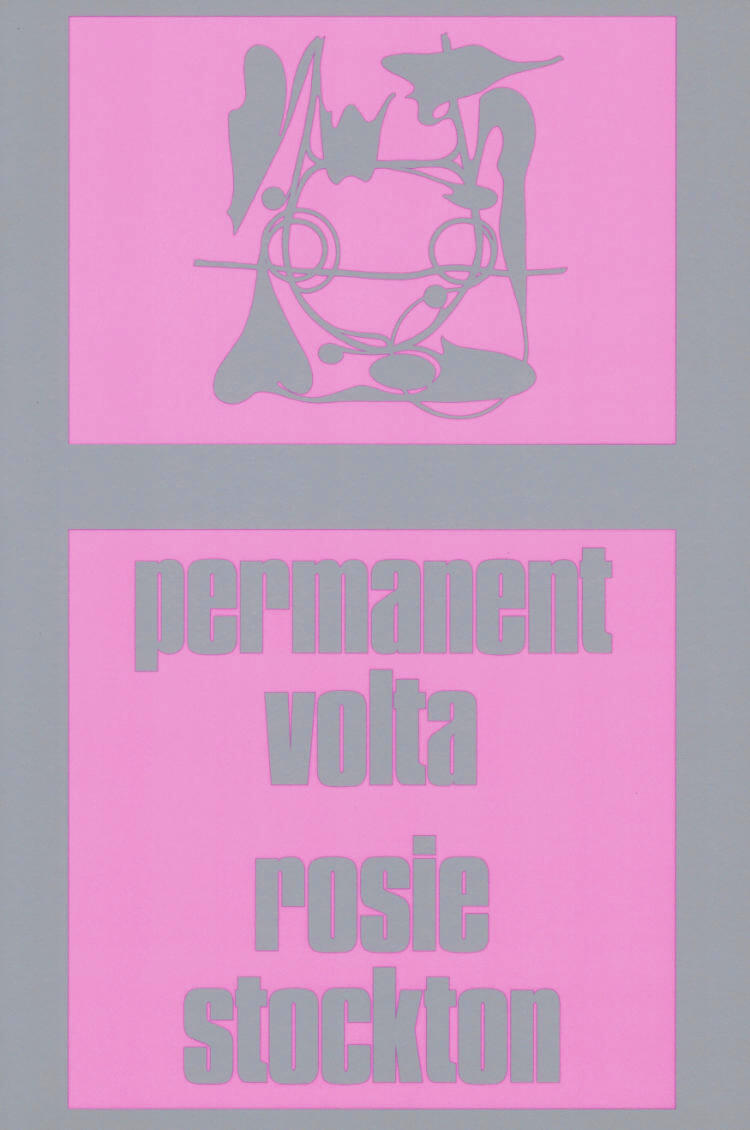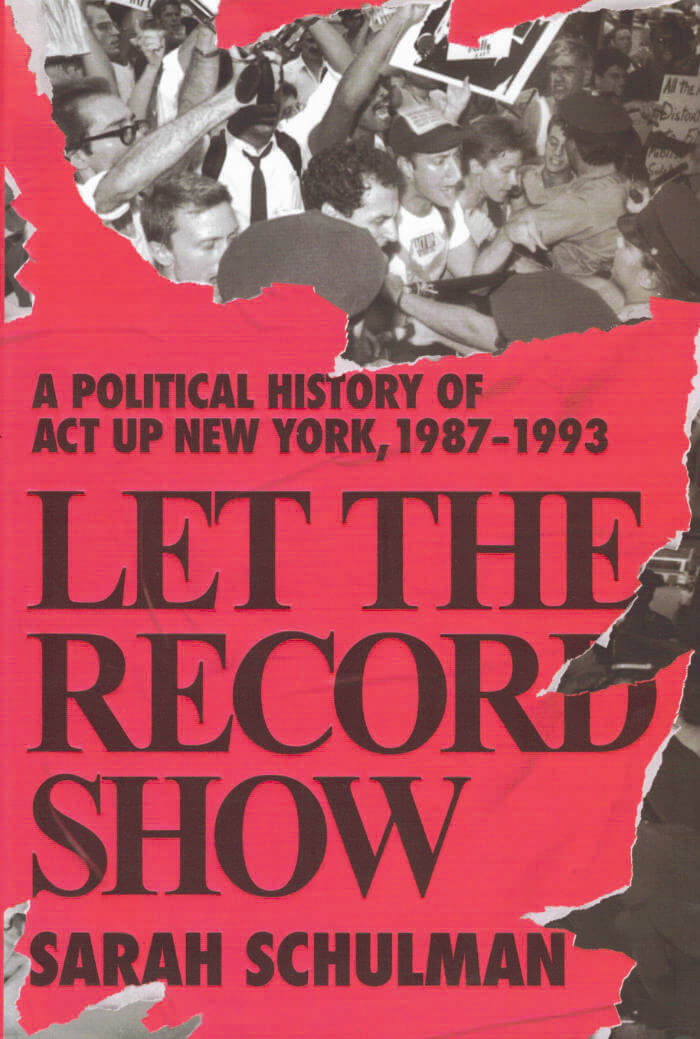Books
Books
published in 2021

SUCCES
kunststof (20x) kunststof kunststof kunststof
kunststof kunststof kunststof kunststof
kunststof kunststof kunststof kunststof
kunststof kunststof kunststof kunststof
Kunststof
Digital print
104 pages
Edition of 50
21 x 29,7 cm
More images at https://infinitif.org/SUCCES

Where Do You Draw The Line Between Art and Politics
Where Do You Draw The Line Between Art and Politics? consists of a series of interviews with individuals who have been active in various capacities at the intersection of art and politics. Between historical documentation, political memory, dialogic reflections and motivational support, the publication focuses on the experiences, commitments, and feelings that animate and inform aesthetic priorities in social spaces both within and outside of art institutions; a repository designed to inspire and enourage the politicization of aesthetics, as opposed to the aestheticization of politics.
Davide Tidoni is an artist and researcher working with sound and listening. With a particular focus on direct experience, observation, and action, he creates works of different formats that include live performance, intervention, walk, video, audio recording, and text scores. He is interested in the use of sound and music in counter-culture and political struggles and has published a sound based field research on the northern italian ultras group Brescia 1911 (The Sound of Normalisation, 2018).

The Posttraumatic Newspaper vol.1 Inhale, Exhale
The Posttraumatic is a newspaper created by creatives and artists. [eng, cast, cat]
Why a newspaper? The project believes that a newspaper is an important link between our social reality (built over the centuries by three-headed monsters and the occasional fairy godmother) and the individuals who live in it, because it is an essential communication element and because its content is a fucking drama almost always.
When Ulrich Beck, a literate man, assures us that “the media does not respond to the inspiration of the enlightenment but to that of the market and capital” we can only read the news with a distrustful and defenseless frown. Uncle Sam manipulates us to his likings and we satisfy our appetites by feasting on his words as if they were cocaine-coated cookies that only serve to fatten the need to win over arguments at our neighbor’s dinner-table conversations. We do not know if the information we swallow is invented, bought, if they are news clippings curated by a 4channer´s paranoid imagination, or if it is an objective, absolute, eternal truth.
Based on these fatalistic, dramatic and somewhat depressing theories on news and their consumption, 39 artists were contacted and each one was granted with a space, a sort of an article, to do whatever they wanted with it. It has not been intended to generate any specific ideological discourse and there is no gift flag.
With Contributions by: Escif, Ampparito, Aida Gómez, Mas Siedentop, Jofre Oliveras, Flavita Banana, Helen Bur, Michael Beitz, Biancoshock, Milu Correch, Luce, Marta Aguilar, Jan Vorman, Igor Ponosov, Ana Vilamú, Vas Ban Wieringen, Gigi Ei, Vlady, Val Rovatti, Octavi Serra, Nicolás Garcia, Valentina and the Electic Post and Others.
.jpeg)
Curb
Divya Victor documents how immigrants and Americans navigate the liminal sites of everyday living: lawns, curbs, and sidewalks, undergirded by violence but also constantly repaved with new possibilities of belonging. Curb witnesses immigrant survival, familial bonds, and interracial parenting in the context of nationalist and white-supremacist violence against South Asians. The book refutes the binary of the model minority and the monstrous, dark "other" by reclaiming the throbbing, many-tongued, vermillion heart of kith.
"In poems of brilliant aesthetic diversity and haunting imagery ('Stop bath & rinse, / then hang up this feeling/ by its arms'), Curb illuminates and challenges the boundaries that divide and discipline us."—Evie Shockley, NPR
Divya Victor is the author of Kith, Natural Subjects (Winner of the Bob Kaufman Award), Unsub, and Things To Do With Your Mouth. Her work has been collected in numerous venues, including, more recently, BOMB, the New Museum's The Animated Reader, Crux: Journal of Conceptual Writing, The Best American Experimental Writing, POETRY, and boundary2. Her work has been translated into French, German, Spanish, and Czech. She teaches at Michigan State University.

What Bungalows Can Tell
Paoletta Holst, Brigita Murti and 1 more
What Bungalows Can Tell is the result of extensive artistic and architectural research on the village of Kaliurang (Yogyakarta region, Indonesia). This publication brings together different essays and a series of photographs that critically explore the spatial, transformative effects of globalisation and heritage formation on a local scale. It looks specifically at the colonial bungalows —what can they tell?— and the stories around them, questioning how they were used in the past, what their function is in the present and what they can represent in the future. In doing so, this publication intends to take into account the colonial history of the village and, at the same time, bring to the fore the voices, stories and local wisdoms often eclipsed by more prominent forms of Western knowledge production.

Mamma Rassise No.3
Écrire comme être un chiton, c'est à dire de soi extraire la soie chitineuse. Les squames calcaires exsudés de son fragile : des miettes d'écailles et de spicules tapissent un devenir-mollusque. Au dedans mouolles mais affamé.es, brouteur.euses bestial.es à l'aube de grignotage ; il y a de quoi gratter !
avec les textes de Leo Go, moilesautresart, Marine Forestier, Suzette Haden Elgin, Ninoa André, Valentin Godard, Lucas Lazzarotto, GPT-3 soua la houlette de Guilluame Seyller; et les dessins de Patricia Lino Dias, Alix Penon.

Permanent Volta
Permanent Volta is a book of poems about constraint and debt, as much as it is about excess, credit, loving luxury, and hating work. These are love poems about how queer intimacies invent political and poetic forms, how gender deviance imagines post-sovereign presents and futures.
Taking cues from Rosa Luxemburg's birdsongs and the syntax of invasive flowers, these poems strive to love lack. If history sees writers as tops and muses as bottoms, these poems are motivated by refusal, inversion, and evading representation. In Permanent Volta, the muses demand wages, and then they demand the world. Full of bad grammar, strange sonnets, and truncated sestinas, these poems are melancholy and militant, lazy and anti-state, greedy and collective.
Permanent Volta is for anyone motivated by the homoerotic and intimate etymology of comrade: one who shares the same room.

Let the Record Show: A Political History of ACT UP New York, 1987-1993
In just six years, ACT UP, New York, a broad and unlikely coalition of activists from all races, genders, sexualities, and backgrounds, changed the world. Armed with rancor, desperation, intelligence, and creativity, it took on the AIDS crisis with an indefatigable, ingenious, and multifaceted attack on the corporations, institutions, governments, and individuals who stood in the way of AIDS treatment for all. They stormed the FDA and NIH in Washington, DC, and started needle exchange programs in New York; they took over Grand Central Terminal and fought to change the legal definition of AIDS to include women; they transformed the American insurance industry, weaponized art and advertising to push their agenda, and battled, and beat, The New York Times, the Catholic Church, and the pharmaceutical industry. Their activism, in its complex and intersectional power, transformed the lives of people with AIDS and the bigoted society that had abandoned them.
Based on more than two hundred interviews with ACT UP members and rich with lessons for today's activists, Let the Record Show is a revelatory exploration, and long-overdue reassessment, of the coalition's inner workings, conflicts, achievements, and ultimate fracture. Schulman, one of the most revered queer writers and thinkers of her generation, explores the how and the why, examining, with her characteristic rigor and bite, how a group of desperate outcasts changed America forever, and in the process created a livable future for generations of people across the world.

MW Collected Texts (Bootleg)
This bootleg edition collects scanned copies of Monique Wittig's writing. It includes; The Lesbian Body, Les Guérillères, The Opoponax, and Lesbian Peoples: material for a dictionary— In true bootleg style, punk enough to carry the truly radical words of Wittig: scans, a little grainy, with marginalia of unknown origins. Now, we can dress ourselves in the ravishingly erotic, violent splendorous brilliance to become baby Wittigs.
This edition was assembled out of a deep love of Wittig's work by Chloe Chignell.
Monique Wittig was a French author and feminist theorist particularly interested in overcoming gender and the heterosexual contract. She published her first novel, L'opoponax, in 1964. Her second novel, Les Guérillères (1969), was a landmark in lesbian feminism.

A Documentary Herstory of Women Artists in Revolution
A rare, ever-relevant compendium of texts and manifestos from women artists on gender and race issues in cultural institutions
Originally published in 1971, A Documentary HerStory of Women Artists in Revolution documents the efforts of W.A.R., a loose group of women artists, filmmakers, writers and cultural workers organized around advancing the place of women in the art world. Members of W.A.R. included Juliette Gordon, Sara Saporta, Therese Schwartz, Muriel Castanis, Cindy Nemser, Dolores Holmes, Betsy Jones, Silvia Goldsmith, Jan McDevitt, Lucy Lippard, Grace Glueck, Poppy Johnson, Brenda Miller, Faith Ringgold, Emily Genauer, Agnes Denes, Doloris O'Kane and Jacqueline Skiles.
Active from 1969 to 1971, W.A.R. was founded as the women's caucus of the Art Workers' Coalition (AWC). AWC mobilized around anti-war protest and anti-racist action, also campaigning for artists' rights and wages, the decentralization of museums across NYC boroughs, more diverse exhibition programming and the restructuring of management within cultural institutions.
This facsimile publication of A Documentary HerStory of Women Artists in Revolution gathers manifestos, statements and declarations by W.A.R. members; articles and reports about gendered and racialized discrimination in the arts; pro-abortion flyers and protest ephemera; and grant applications and reports detailing the founding of the Women's Interart Center in spring 1970, W.A.R.'s brick-and-mortar studio, workshop and exhibition space. It also reproduces documentation of key actions including the 1970 Art Strike Against Racism, Sexism, Repression and War, and correspondence with officials at the Whitney Museum, the Guggenheim Foundation and the Museum of Modern Art, among others.
This publication takes as its source the second edition of the publication, which was published in 1973. The edition was chosen because it features a preface and addendum with retrospective reflections on the history and activities of W.A.R.

Fatamorgana
Fatamorgana is both a political parody and a speculative comedy, in which historical and contemporary personalities narrate post–World War II global history and geopolitics, through a web of references and direct citations. The undercurrent is one of sense, illusion, and truth. Hanan — a Muslim cousin of James Joyce's Molly Bloom — finds herself, not sure how, in Beirut's Hall of Fame waxwork museum after its closing hours.
Like Homer's most virtuous Penelope, this woman waits for her husband; she appears to have set a date with him, but he has not arrived—where can he be? While waiting, she begins interacting with the wax figures in the museum's empty rooms, and the figures respond in turn. Blending and clashing sixteen differing languages, as well as a variety of fiction and nonfiction sources, Fatamorgana is a multidimensional space, a kind of experiment with truth, or a type of fiction that sets up a platform for the collision of multiple fragments, elements, stories, facts.
The publication is the final chapter in a longtime endeavor. Fatamorgana is a multiform project realized between 2016 and 2019, comprising a theatrical work, two films, two publications, and a sound installation. The current book is dedicated to the graphic translation of the text at the heart of the project, alongside a variety of related materials, including project notes and contributions from various authors, while providing online access to photographic, video, and sound materials, along with technical specifications for all of the project's component elements.

Marion Baruch
First comprehensive monograph on Marion Baruch's work. This edition presents a broad span of Baruch's oeuvre, from the 1960s to her recent textile production. It includes three essays—by Fanni Fetzer, Martin Herbert, and Noah Stolz—as well as polyphonic focus texts by curators, friends, and art historians from the artist's circle, all providing compelling insights into her works and methods.

Un-Break My Walls
The first monograph on Christiane Blattmann takes its title from her solo show Un-Break My Walls at Kunsthalle Münster in 2019. Blattmann intricately interweaves, intermeshes, combines, compounds, merges, and processes in her work not only materials but also structures, things, stories, characters. The volume includes extensive illustrations of exhibitions, projects, and works, and a great number of black-and-white images capture the artist’s studio practice. The interactions of materials, along with theoretical and literary references, serve as important points of departure, and the emblematic outcomes involve text and texture as material structure and patterned surface; vivid condensation and entanglement; and invitations to exploration and reflection. The book compiles different elements designed on a series of shifting layers. Texts by Merle Radtke and Chloe Stead and a conversation between Christiane Blattmann and Than Hussein Clark provide insight into Blattmann’s art, complemented by a piece of fiction by Huw Lemmey.
Texts by Merle Radtke, Huw Lemmey, and Chloe Stead, and a conversation between Christiane Blattmann and Than Hussein Clark
